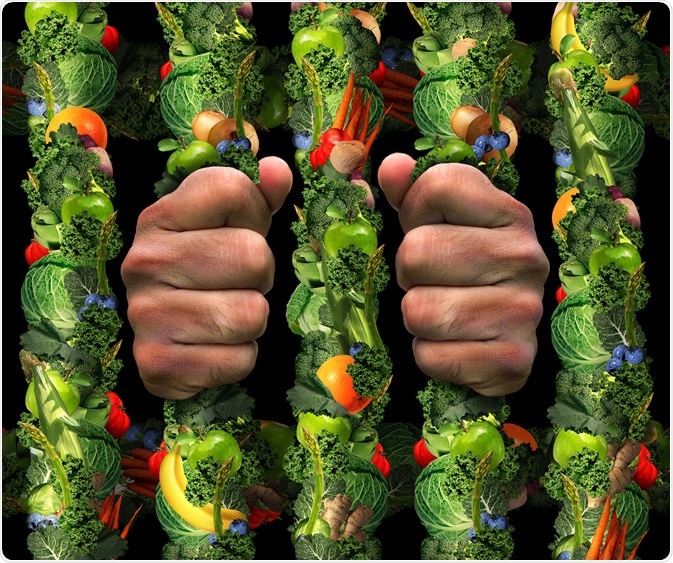Orthorexia nervosa (ON) is a condition characterized by extreme dietary restrictions in the name of healthy eating. It involves rigid ritual surrounding the preparation and eating of food, with strict avoidance of all foods thought to be not ‘clean.’
It is paradoxical that while ON is brought on by a strong impulse to achieve good health through a clean diet, it may result in malnutrition, social and psychological isolation and disorders, and a lowered quality of life.

Image Credit: Lightspring / Shutterstock
Diagnostic Tools
The diagnostic criteria and assessment tools for ON are still in the making. Those presently available include the following:
- The Bratman and Knight 10-point scale
- The ORTO-15 scale with 15 items
- The ORTO-11 scale with 4 items cut down from the ORTO-15
- The ORTO-11 Hu scale with 4 less items (different from the four removed in the ORTO-11)
- The Eating Habits Questionnaire (EHQ) with 21 items
None of these have yet been fully validated, and so the reliability of these measures is yet to be established. The ON studies are therefore limited to estimates of prevalence, which may range from 7 percent to almost 58 percent, when applied to the general population. In specific populations, prevalence rates may be estimated to be as high as 82 percent, as among dieticians and healthcare specialists.
It is not yet clear whether ON is more prevalent in men or in women, but studies tend to show that women have a higher rate. Other studies do, however, show contradictory data, as well as disparities in risk factors such as:
- Age
- Level of education
- Body mass index
- Smoking and alcohol
- Focus on nutrition and health for the sake of career or enjoyment - may breed a sense of pressure to be healthy in eating habits to maintain a proper image. For instance, healthcare professionals, artistes, or professional athletes, may have higher levels of knowledge about social conceptions of healthy eating, and also feel that they have to eat clean food, and thus fall into ON tendencies, strengthened by perfectionist thinking.
- People who already have eating disorders have been found to have a higher risk of ON both at baseline, and, strangely, three years after treatment. It is postulated that patients recovering from eating disorders have a higher prevalence of ON correlated with improvement in their symptoms, or with changes towards a milder form of the original conditions.
It is also important to realize that individuals developing ON are a part of a society which lays undue importance on the personal effort to achieve a healthy body shape and size, as part of the individual’s moral obligation to society, and thus values those who obey these expectations by healthy behavior and eating habits.
These habits may later become detrimental to the person’s physical and mental health, but still remain fixed and strong out of a desire and conviction to adhere to social norms.
The unconscious reward envisaged is an acceptable social position and increased self-esteem, reaped by exerting immense self-discipline in the pursuit of individual healthy eating.
References
Further Reading